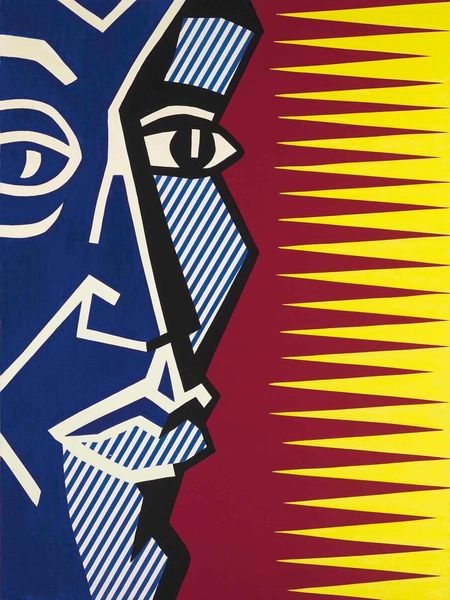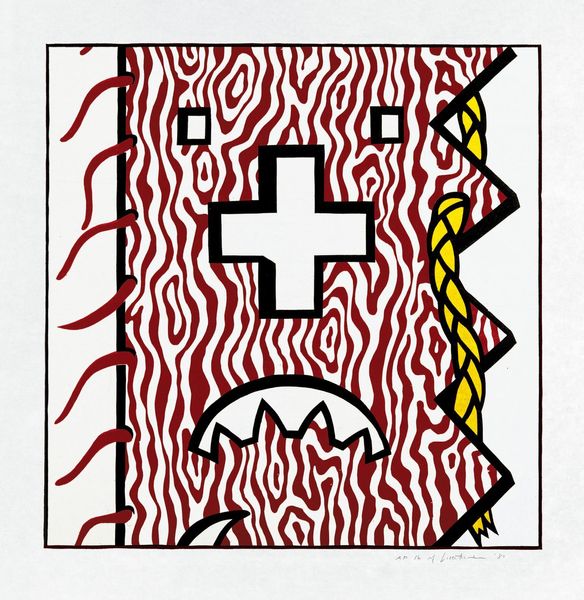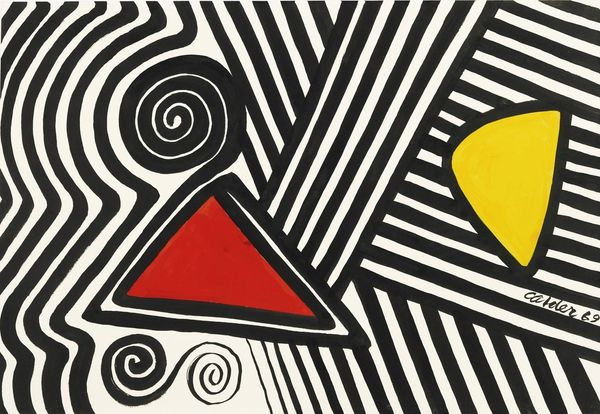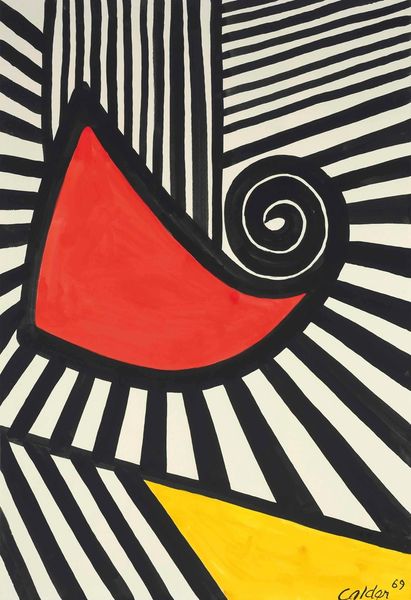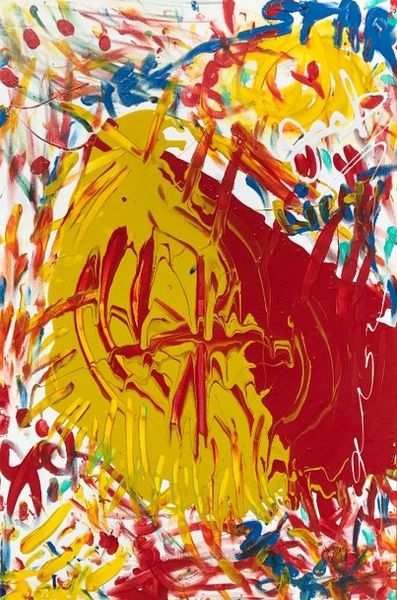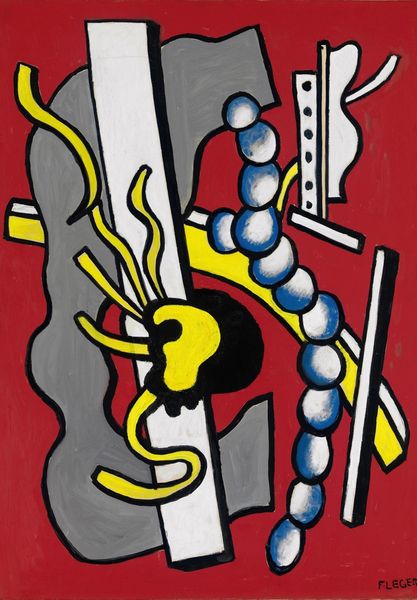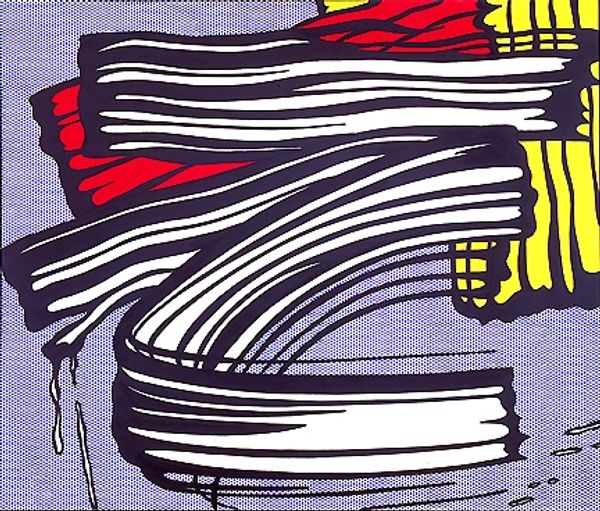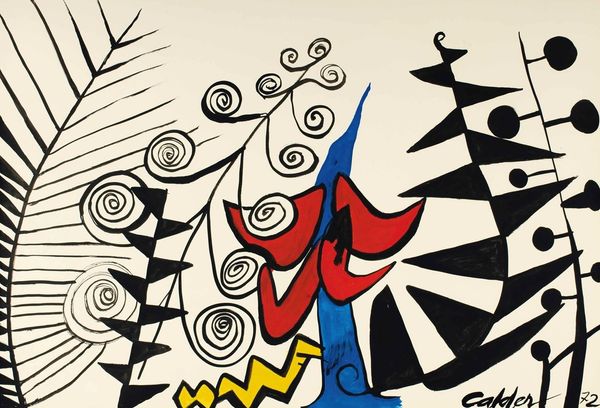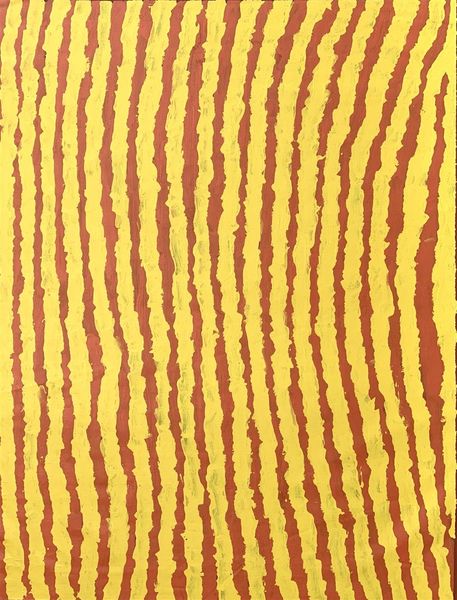
Copyright: Modern Artists: Artvee
Curator: Welcome. We're standing before Roy Lichtenstein’s “Head with Braid and Feathers,” a 1979 acrylic painting. The composition features a face constructed with wood grain patterns, bold colors, and his signature Ben-Day dots... absent here, interestingly. Editor: My first thought is "puzzle." It's like he’s deconstructed a face and rebuilt it from geometric, almost architectural elements. The high-contrast color scheme definitely jumps out, particularly the cadmium yellow braid against that almost woodgrain-patterned background. Curator: Precisely. Lichtenstein’s late works saw him drawing from various sources, including Cubism and Surrealism, to deconstruct and reimagine familiar forms. This "head," so to speak, borrows Native American headdress motifs and merges them with an Art Deco sensibility. What's interesting is how Lichtenstein used a mechanical process to achieve an abstract aesthetic. Editor: It really feels like an artifact of cultural memory. Braids and feathers are loaded with meaning in various cultures, often symbolizing identity, status, and spiritual connection. By rendering them in his distinctly Pop style, he’s both celebrating and commenting on the commercialization of these symbols. Even that deep red background recalls southwestern landscapes while it feels graphic and modern. Curator: And don’t forget the appropriation debate of the '70s. Lichtenstein, consciously or not, inserted himself into conversations about commodification and authenticity through that highly mechanical and commercial production of the images. This creates visual tensions by playing with our ingrained responses to representation and its market-driven forms. It also puts forward questions of institutional access. How are museums culpable? Editor: So, in some sense, by abstracting a headdress and making it distinctly "Lichtenstein," he’s diluting its cultural significance while simultaneously calling our attention to its symbolic power and potential. And to whose gain? Curator: The mechanical versus handmade tension—it highlights that the perceived divide has less to do with intent and outcome, but of structural forces within the arts world. Editor: I suppose in that regard it reveals art's dependence on symbols to work its magic and art’s entanglement with capital. Overall, it is not as surface-level Pop, as it might initially seem! Curator: Agreed, its complexity lives within the institutional analysis it allows.
Comments
No comments
Be the first to comment and join the conversation on the ultimate creative platform.
